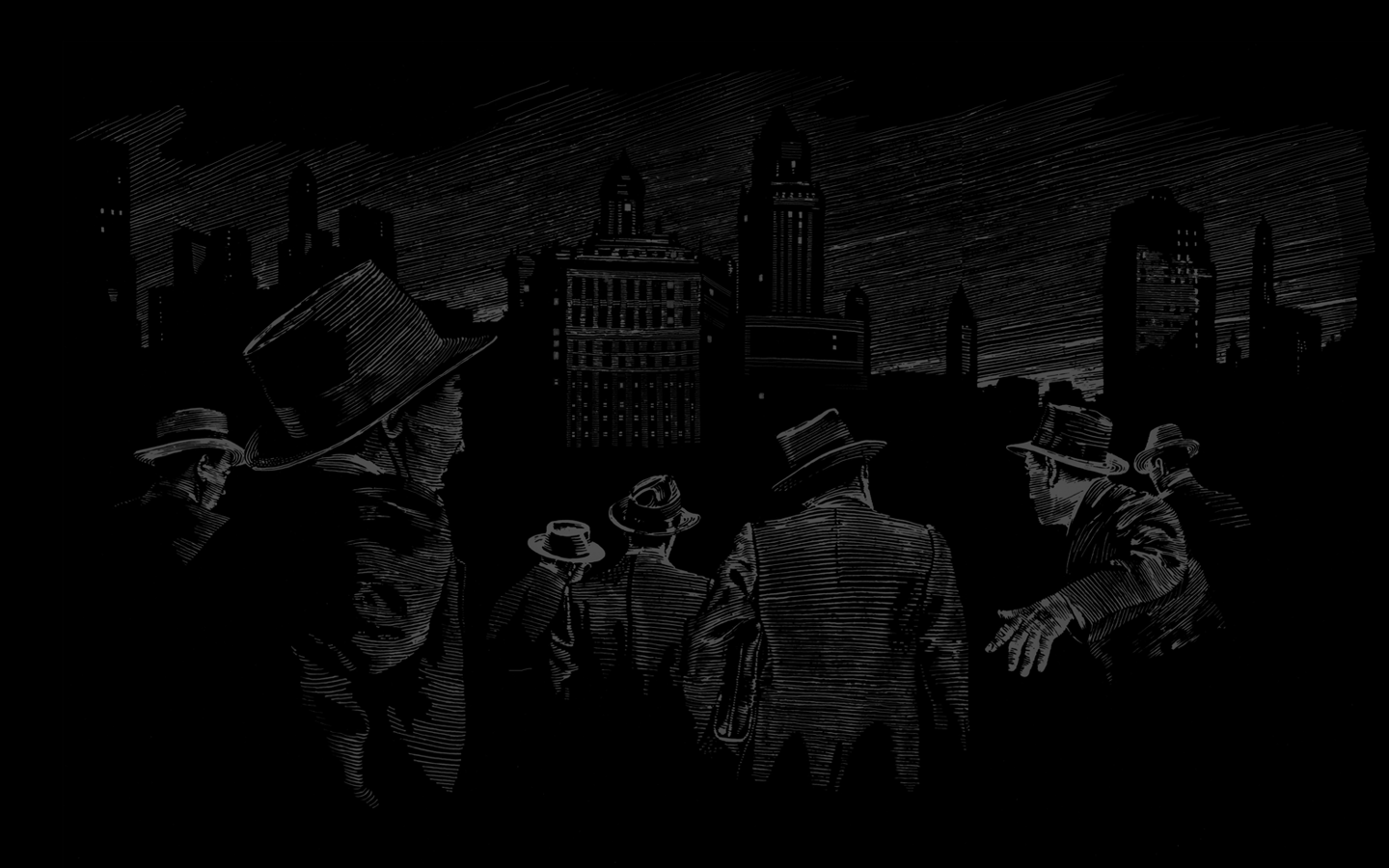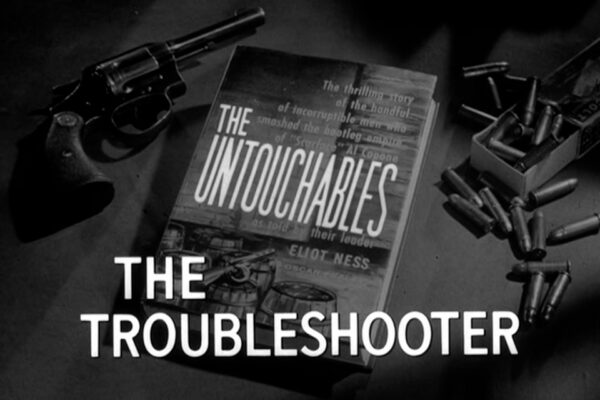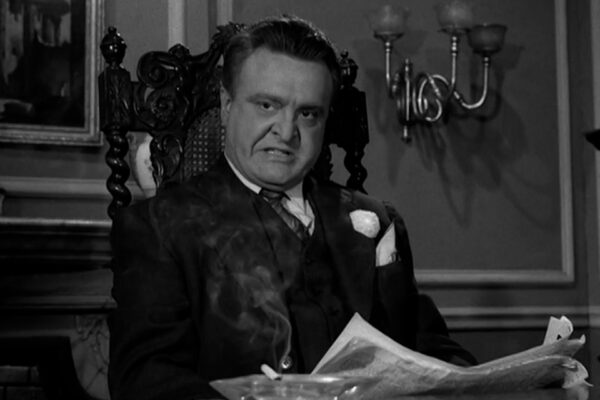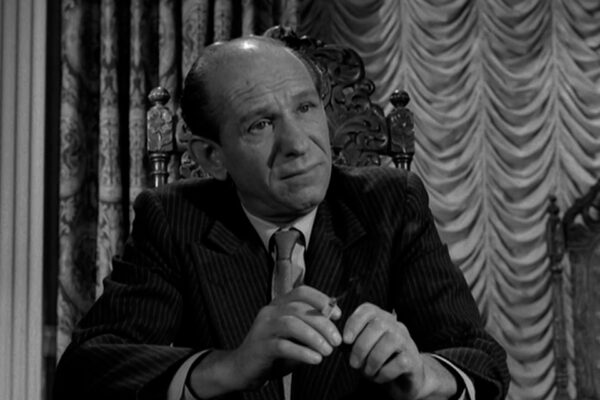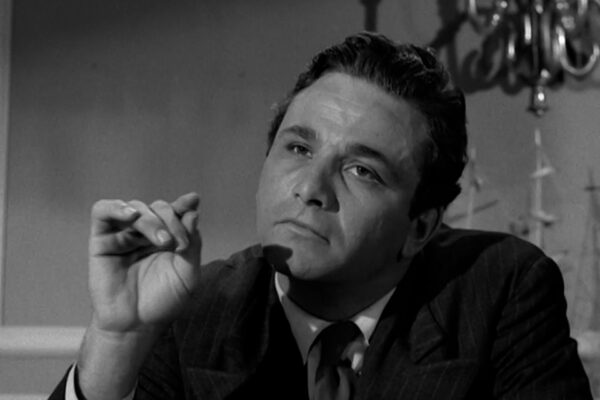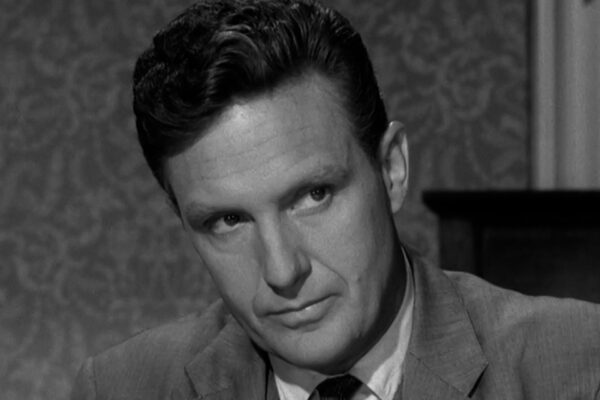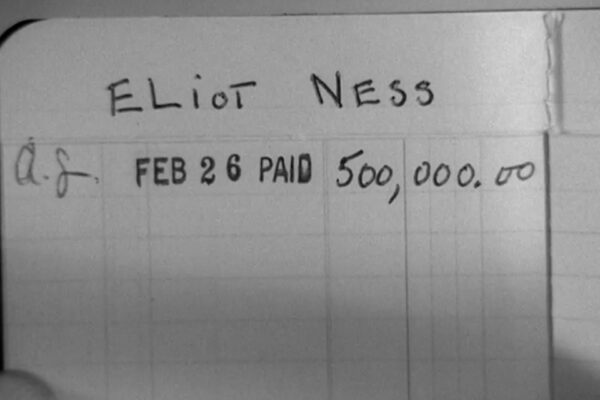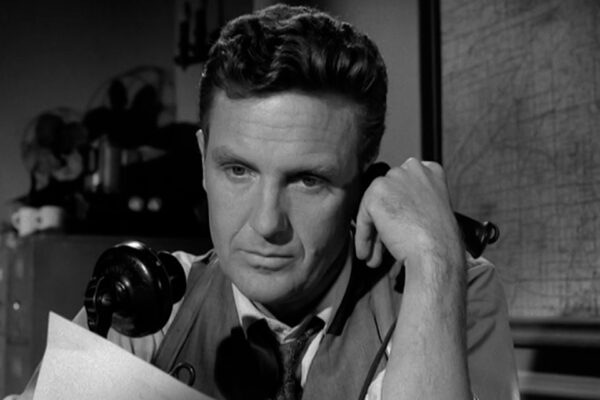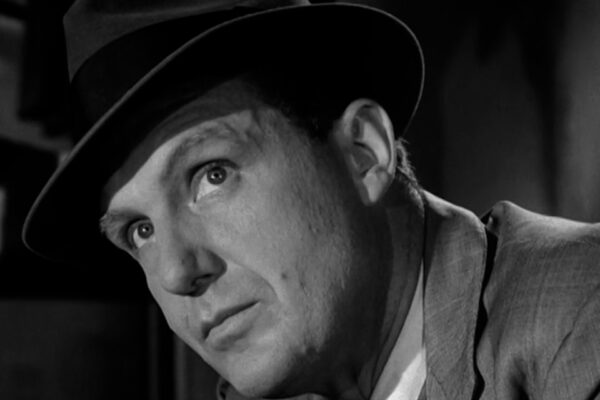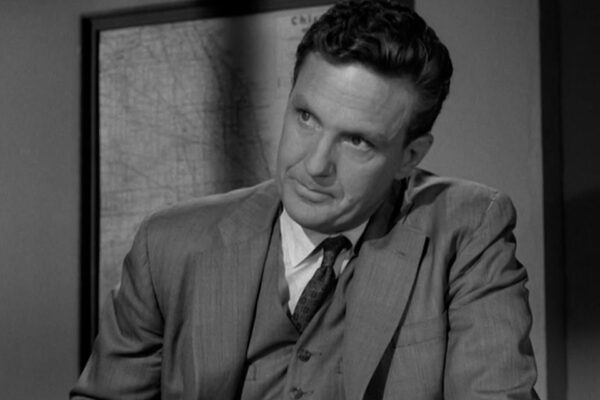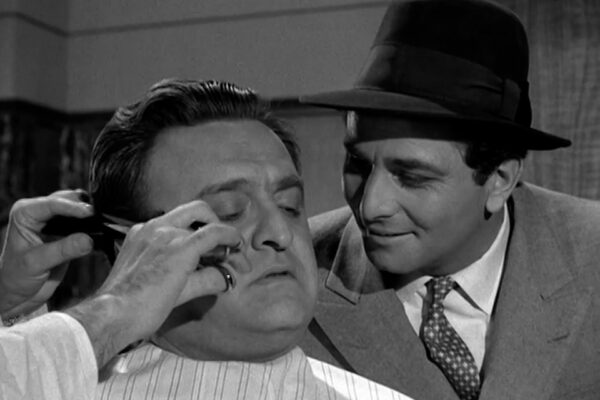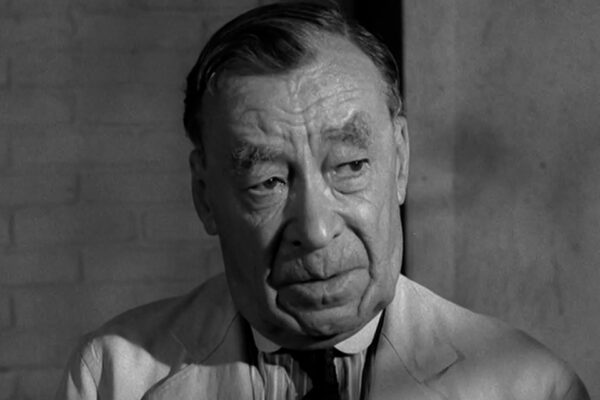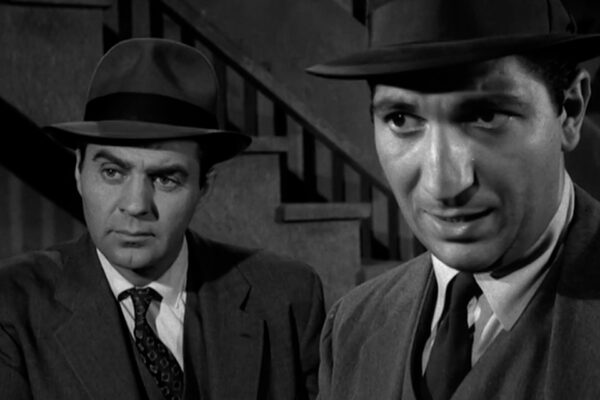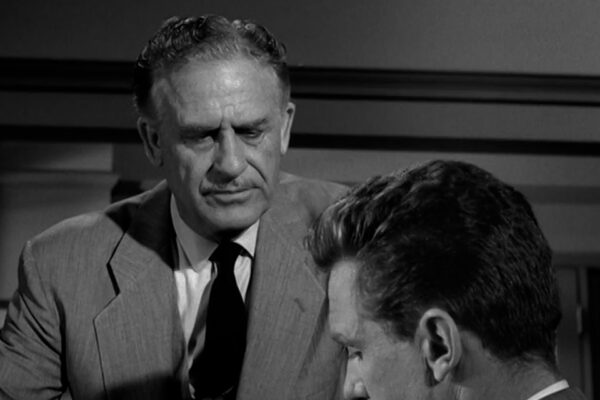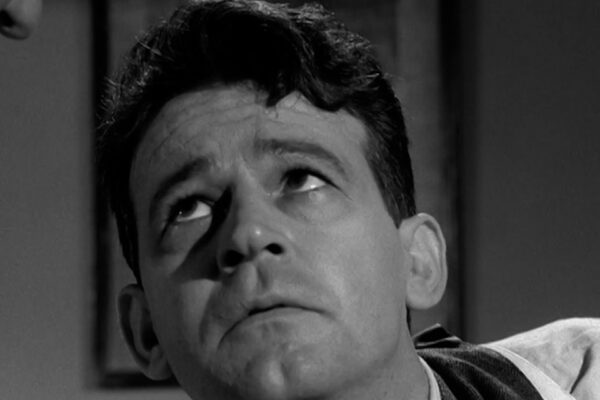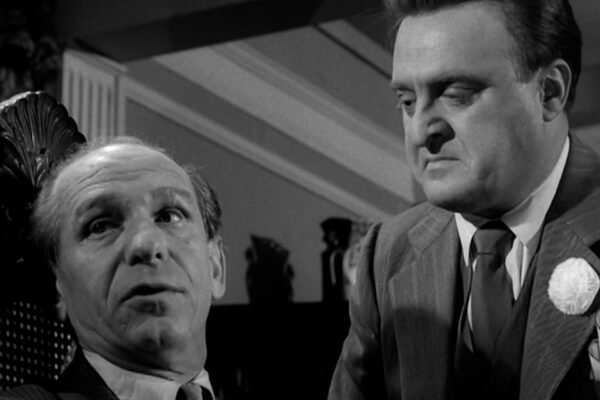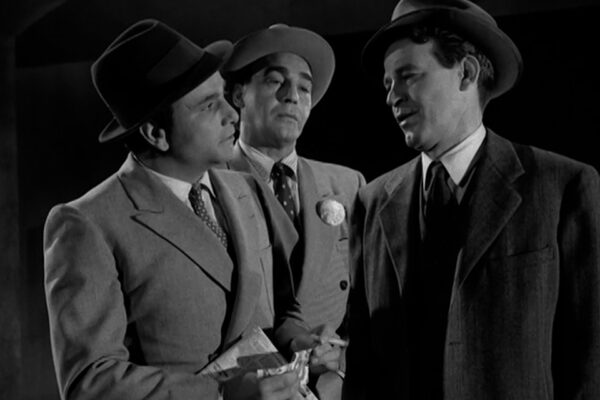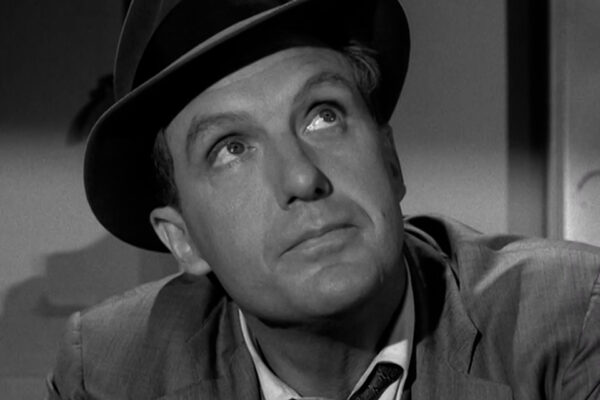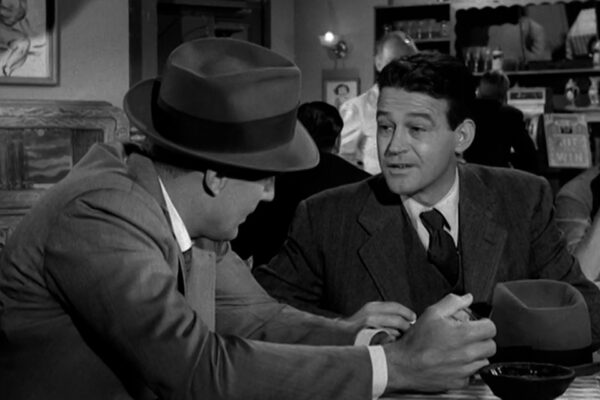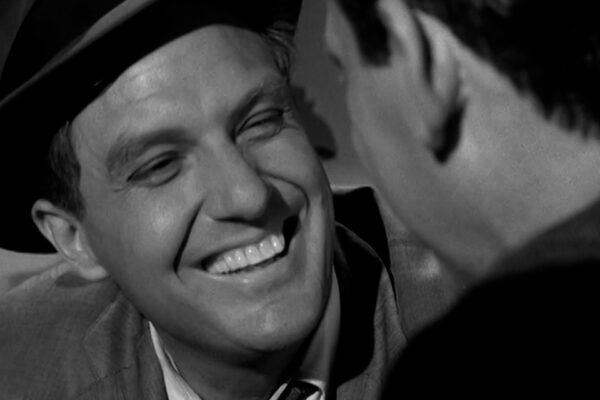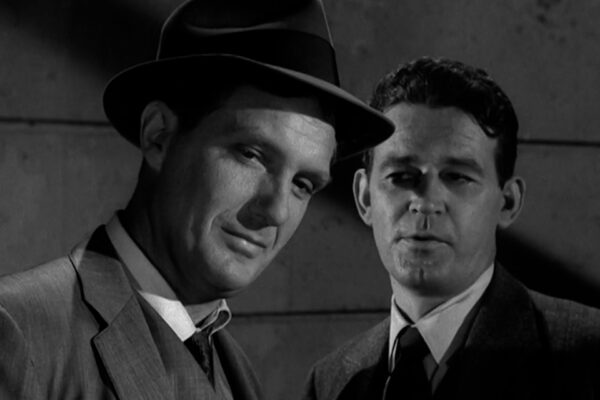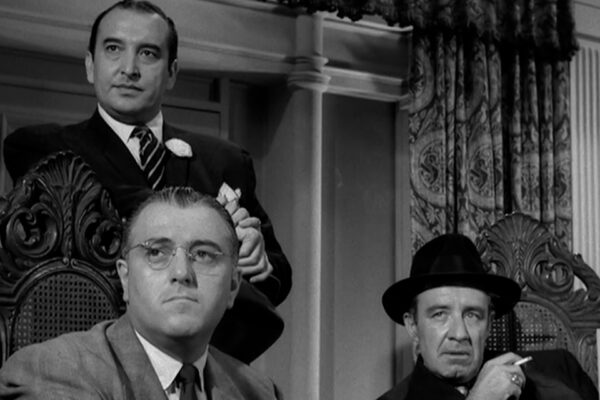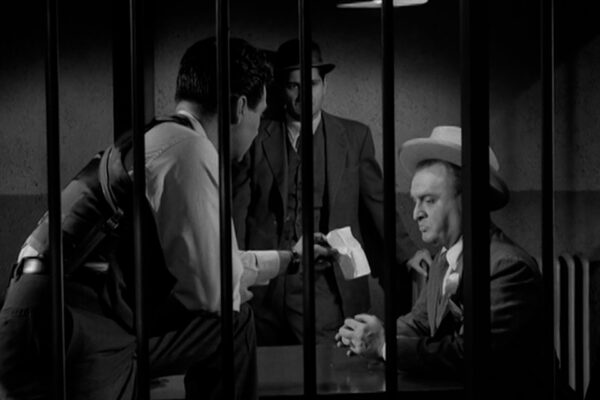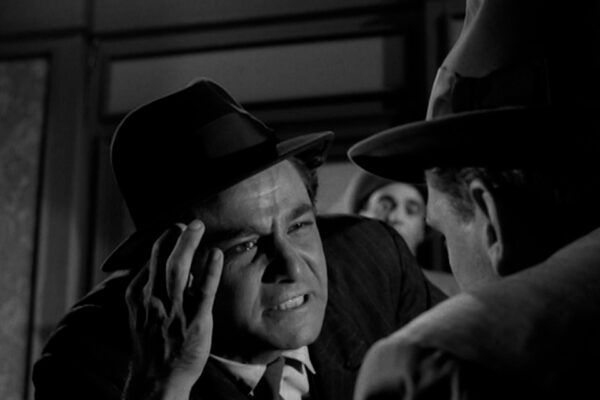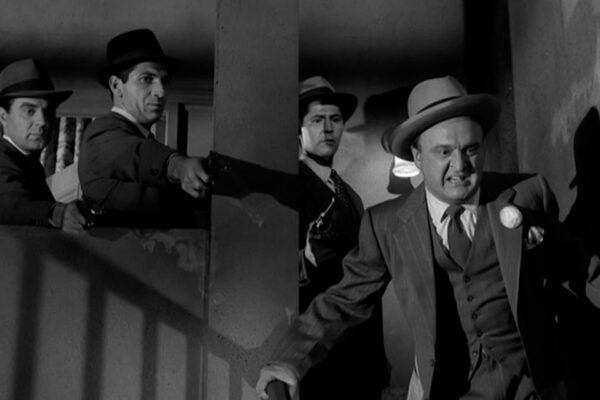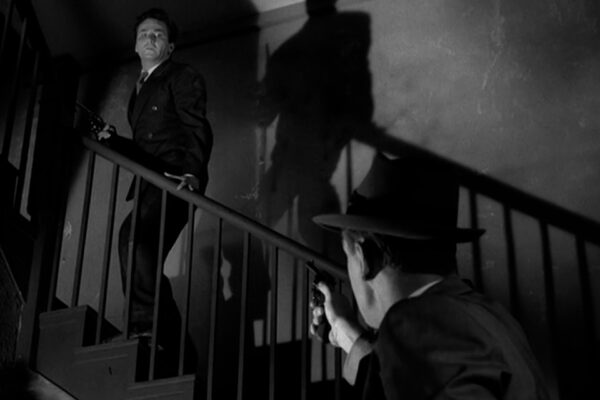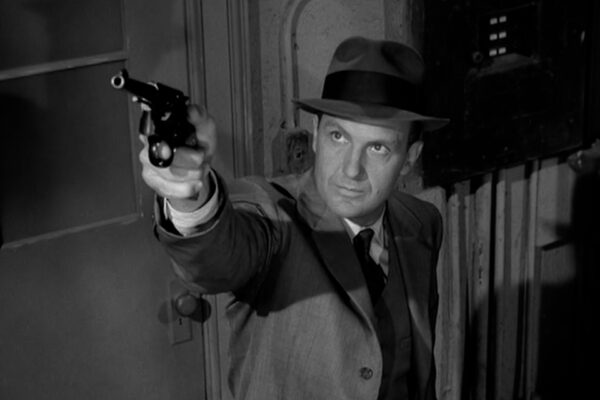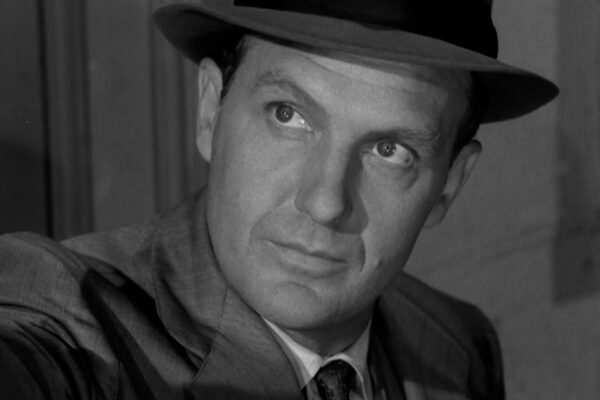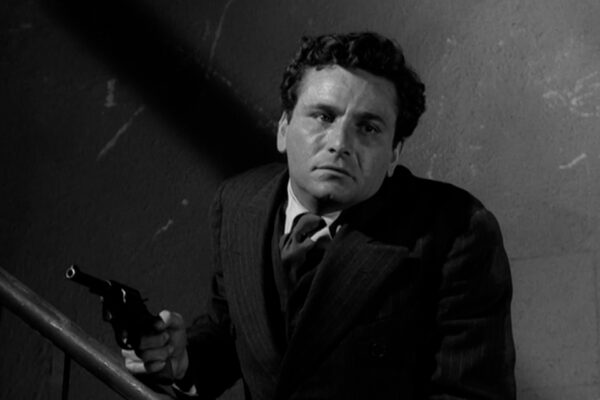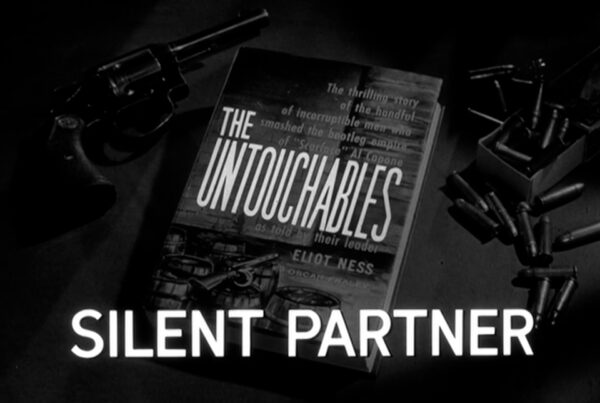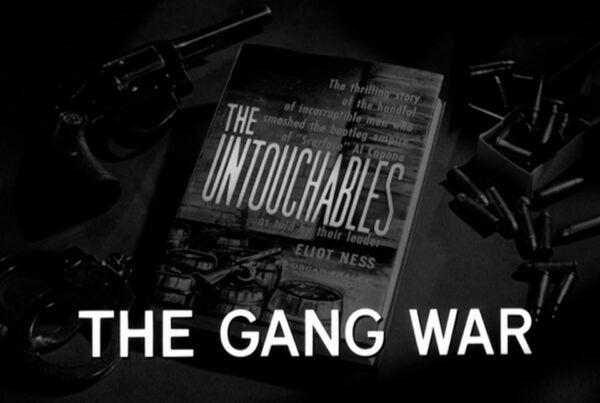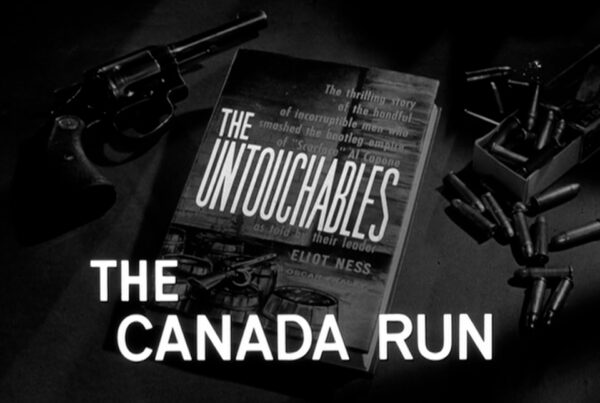THE TROUBLESHOOTER
Airdates: October 12th, 1961 and April 26th, 1962
Written by Louis Pelletier
Directed by Stuart Rosenberg
Produced by Alan A. Armer
Director of Photography Charles Straumer
Special Guest Star Peter Falk
Co-starring Murray Hamilton, Ned Glass, Vincent Gardenia.
Featuring Michael Dana, Vladimir Sokoloff, Frank Wilcox, Barnaby Hale, John McLiam
”In the Summer of 1934, a new gambling device swept across the country. A mild-looking game of chance which anybody could play and everybody did play. A nickel and dime game that looked like small-time stuff. In one year, the mild-looking punchboards grew bigger than the numbers racket. The take in Chicago alone rose to $70 million dollars. Because of Eliot Ness’s raids on punchboard manufacturing sites, the city-wide profit on the boards dropped a sizable fifteen percent. But Ness wanted the men on top. There were five men who ran the punchboard syndicate. Their headquarters was an old building down by the freight yards. The five top men represented the five major cities controlled by the syndicate. At the head was Chicago, then Cincinnati, St. Louis, Detroit, and New York. ”
The most serious problem for the punch board racket seems to be Eliot Ness, so the syndicate imports New York troubleshooter Nate Selco (Peter Falk) to handle the matter.
When Selco discovers that Ness cannot simply be bought, he attempts to frame him for the shooting of an unarmed punch board collector, an affair arranged by Selco and two unwilling candy store proprietors. He then secures the services of Harry Dannigan (Murray Hamilton), a Chicago newspaperman with a weakness for easy money, who takes out after Ness in the press. A subsequent story under Dannigan’s byline goes so far as to suggest that Ness may have pocketed the collector’s recipes.
Selco then begins covering his tracks. First, the candy store where the punchboard collector was shot, is blown up, and the owners, who could have cleared Ness, killed by the explosion. Next, the seriously wounded punchboard collector in question dies in the hospital when Selco shuts off his oxygen.
Selco’s next effort is to eliminate the punchboard syndicate. He sets up his old boss Max Regal (Ned Glass) and soon after, Petrie is taken into custody by police, having been tipped off on an outstanding warrant from California. With two top men out of the way, Selco is ready to assume control of the punchboard racket as the bad publicity forces Ness’s boss, Beecher Asbury (Frank Wilcox) to take action and the district attorney releases a story heralding Nesss transfer to Des Moines.
Emboldened by his claim as the reporter who ran Ness out of town, Dannigan demands more money. Selco agrees, but instead, plots to do away with the newsman in much the same manner as before, by setting up Ness as his killer. In a confrontation with Dannigan in a tavern, Ness feigns a drunken stupor in which he goes from belligerence to friendship with the reporter in an effort to learn more about his relationship with Selco, and they agree to meet at Dannigan’s apartment later that night. But when Ness arrives, he finds Dannigan murdered and Selco preparing another trap. Selco’s plan is ruined when a special agent, assigned by Asbury for Ness’s security, bursts in. Selco makes a run for it but gets only as far as the syndicate headquarters, where he finds Jake Petrie, in custody, telling the federal agents everything he knows.
Cornered, Selco surrenders.
“With the defection of Jake Petrie and the capture of Selco, the punchboard empire collapsed. The remaining members of the syndicate were picked up that night. Jake Petrie was returned to California, where he went to prison for life. Nate Selco, who had fought for a chair on the punchboard syndicate, ended up with another chair – at Joliet. And in Chicago, Eliot Ness remained in charge of the Untouchables.”
REVIEW
A superb opener for the Third Season, The Troubleshooter demonstrates that the Untouchables has lost none of its swagger and of course, has maintained its “same over-attachment to violence,” as one contemporary critic remarked. With creative transitions from scene to scene, screenwriter Louis Pelletier and director Stuart Rosenberg keep the hour moving fiercely.
Peter Falk, heralded by the same reviewer as “1961’s busiest villain,” turns in one of the most memorable television gangsters ever to hit the small screen in Nate Selco. Clearly, Selco runs away with the program, but colorful cutthroats abound, from Harry Dannigan, the devious newsman, to greedy weasel Max Siegel. There are no wasted characters, no marginal performances.
By 1961, actor Peter Falk was on fire. Though he’d initially appeared in the First Season’s The Underworld Bank, he had since earned an Academy Award nomination for playing mob hitman Abe Relis in the 1960 feature Murder Inc. After some time in theater and avoiding prejudice from talent agents on account of his glass eye, Falk’s role in Murder, Inc. was, as he called it, “like being touched from above.”
Murder Inc. was initially developed by Untouchables director Stuart Rosenberg (it’s no coincidence that most of the film’s cast is made up of familiar mugs from The Untouchables). The film let Falk pattern his bad guys after hoodlums he’d met growing up in Ossining, New York – home to Sing Sing Correctional Facility. Despite acclaim for the slate of vicious characters he’d portray, Falk openly pined for the opportunity to play “the good guy.” He’d land the iconic role of police detective Columbo later in the same decade.
The episode also features an early appearance by Vincent Gardenia (1921-1992), who began his career on the New York stage at the age of five. Born Vincenzo Gardenia Scognamiglio in Naples, his family settled in Brooklyn where his father established an Italian language acting troupe, a company Gardenia remained with until 1960.
His long film career that began in 1958 includes The Hustler, The Front Page, Little Shop of Horrors, and Moonstruck. Gardenia won an Emmy in 1990 for the HBO special Age-Old Friends. His television work spanned three decades with roles in Naked City, All in the Family, and L.A. Law. Paired with Peter Falk again in 1971, Gardenia won a Tony Award for his role in The Prisoner of Second Avenue. In a tribute to his father, he gave his acceptance speech in Italian.
Robert Stack turns in one of his own most memorable bits pretending to be, of all things, drunk, in his encounter with Dannigan, whom Ness deceitfully befriends after having suffered much adverse publicity. Stack once remarked that his best role was as a drunk and it may very well be true. He plays the scene with mischievous relish, bearing his seldom seen perfect grin so broad that for a moment, it appears as though Ness has assumed an entirely new, chummy, and goofy sort of persona, complete with kerosene and tobacco breathe. The whole routine is hilarious – and a moment, his drunkenness appears to be genuine, until the camera slowly pushes in him to clue the audience in on the realization that it’s all for show.
Out of the 120 hours of steadfastly humorous, often violent melodrama, Ness appears for a moment to be actually having a good time.
NEW KINDS OF VILLAINS
The film noir alchemy of the series had been distilled and hardened over the previous two seasons and their controversies. In fact, the heat from the Second Season was still warm.
Only a week before the Third Season premiere, the Federal Communications Commission had formally admonished The Untouchables as failing to appropriately “make clear to its viewers the difference between fact and fancy.” Earlier the same year, Senator Thomas Dodd had opened a hearing of the Senate Subcommittee on Juvenile Delinquency where The Untouchables and its writers and producers were needled relentlessly.
As if that wasn’t enough for The Untouchables, it was during the summer of 1961 Chairman Newton Minnow had sharp words for the television industry:
“I invite each of you to sit down in front of your television set when your station goes on the air and stay there, for a day, without a book, without a magazine, without a newspaper, without a profit and loss sheet or a rating book to distract you. Keep your eyes glued to that set until the station signs off. I can assure you that what you will observe is a vast wasteland.”
Nevertheless, there is refined darkness to the Third Season, brought on by the realization that the more dastardly, conniving, and villainous the antagonists, the more interesting Eliot Ness (and the show) becomes. The darkness is even reflected in a slight expansion to the established Nelson Riddle score and the incumbent Capitol Records music library, adding a mild layer of sonic variety to the proceedings.
The Third Season will not only usher in more sinister villains, but foes that make passionately target the fortitude, livelihood, and life of our fictional Eliot Ness. They’ll frame him (Troubleshooter), ensnare him with corrupt police officials (Power Play and Tunnel of Horrors), vengefully kidnap one of his men (The Silent Partner), threaten to bomb school children (Pressure), and even throw the book at him (The Case Against Eliot Ness) but an even greater foe was on the horizon.
His name? Mitch Miller.
His racket? A sing-a-long variety hour called Sing Along with Mitch.
Airing on rival network NBC at the same time as The Untouchables, Miller would do what no act of Congress or anti-defamation league had done: it knocked Eliot Ness from the top of the rating chart. Aided and abetted in the assault was the decision to run The Untouchables a half-hour later than its traditional time slot at 10:00 PM to accommodate a new, dopey sitcom called Margie, which followed My Three Sons at 8:00 PM. Margie, despite taking place in the 1920s and being sandwiched between two existing hits, failed to retain ABC’s audience.
On October 4th of the same month, Variety’s article on the show‘s ongoing tangle with the FCC coincidentally ran alongside the magazine’s obituary section. Little did anyone know it at the time, but it was the beginning of the end.
OBSERVATIONS
• Notable almost immediately are several distinctive transitions from scene to scene where screenwriter Louis Pelletier breaks up the proceedings with several creative techniques: the final word Winchell’s narration is finished by Selco, dialogue is edited to carry over from one scene to the next, and so on.
• Ness’ card says he’s with the “Department of Investigations,” but his name is misspelled by the prop master as “Elliot” instead of Eliot.
QUOTES
NESS: That’s a lie.
DANNIGAN: We don’t print lies. They cost too much money.


